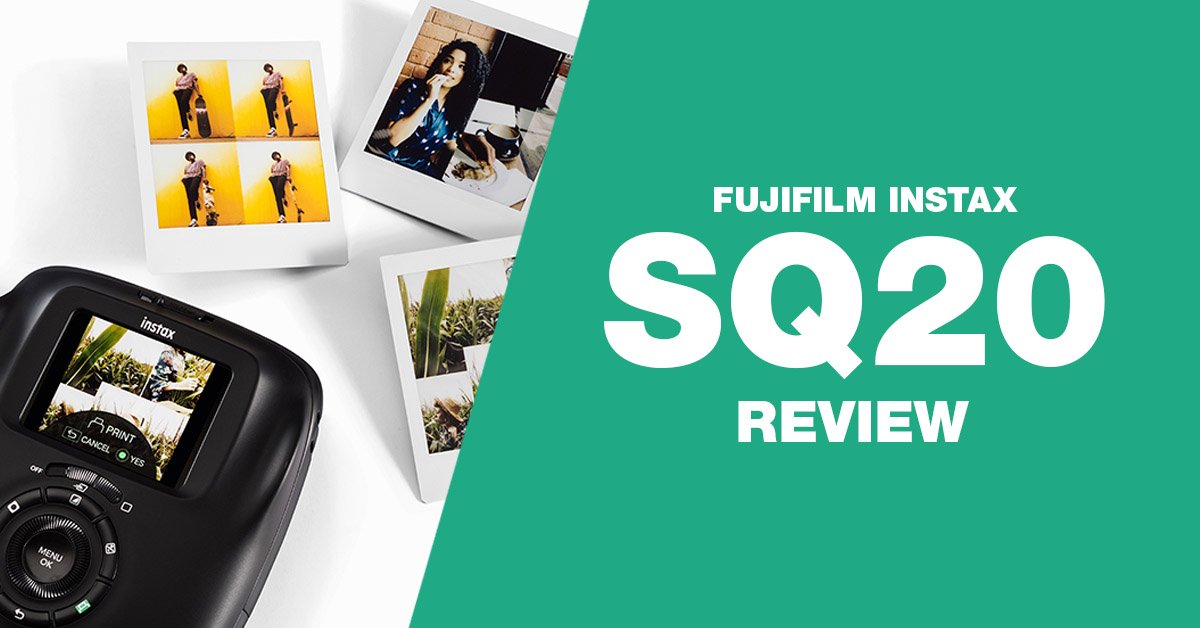It shoots digital images and prints Instax square. Find out if this Instax camera is worth it in the definitive Fujifilm Instax Square SQ20 review.
Introduction

Digital camera with analogue printer, 1/4″ CMOS sensor, 3.69 Megapixels
| Reasons to buy | Cons |
|---|---|
| ✔️ Quality, Real analogue prints ✔️ Selfie friendly ✔️ Quick change buttons ✔️ Fun to shoot | 🛑 Below average digital image quality |
What is the Fujifilm Instax Square SQ20?
The Instax Square SQ20 is a digital camera hybrid released by Fujifilm in 2018. Along with normal digital camera capabilities it can also print Instax square prints. While it can shoot video, this is mostly for the purposes of extracting frames and does not record sound.
What makes a hybrid great?
before getting into the Fujifilm Instax Square SQ20 review proper let’s talk about why you would one a hybrid in the first place, vs a regular Instax. Instax cameras are normally analog camera, which means no digital images. While that is great the issue is that what you shoot is what you get, meaning it doesn’t matter if you didn’t mean to shoot, the moment you press the shutter release button is the moment the camera starts to print.
Doesn’t matter if you didn’t shoot properly. This is what makes Instax expensive, the fact that it will automatically print every single picture you take. Plus there is no possibility to duplicate images, that one image is the only one you will be left with.
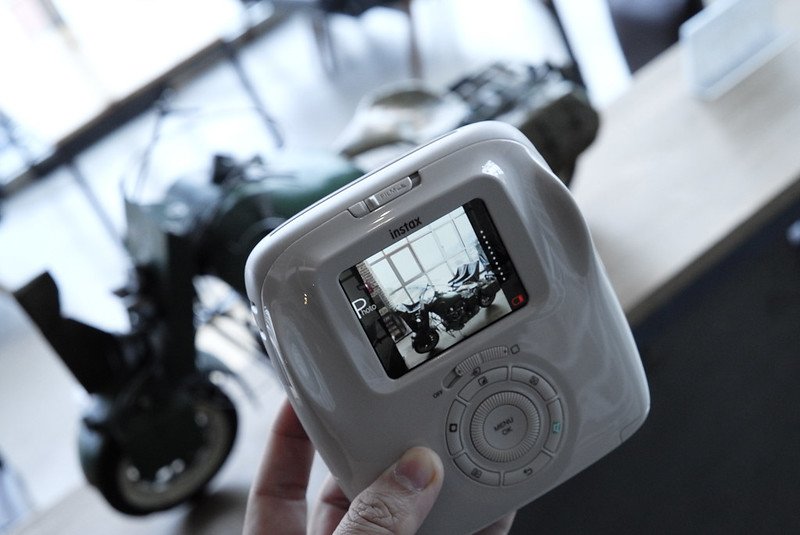
The SQ20 is a hybrid camera, is a digital camera that shoots Instax square film. This means the camera can save the images to the SD card and print images too. What makes Instax hybrids great is the fact that you can now chose which images you want to print. You can now chose to print ONE image in a dozen vs having to waste a dozen prints.
The downside here is that Fuji cut some corners in the digital sensor so it’s a below average digital camera, but it can still push some really out pictures when you shoot it properly. It’s not for everyone but one of the best Fujifilm Instax cameras you can get.
It is however discontinued so you can only find it used.
Fujifilm Instax Square SQ20 review
Let’s jump into the Fujifilm Instax Square SQ20 review, we will first take a look at the body and get into actually shooting the camera.
Camera Body
The body of the camera is made out of plastic and has quite a unique design. Let’s start with the front. One of the biggest reasons a lot of people buy Instax is pretty much to take selfies. So Fuji is always trying to place their shutter release buttons in a way that would make sense both to shoot by looking at the camera from the back or for the front.

For the SQ20 this has two shutter release buttons both placed in front of the camera. So you can fire with either of your index fingers. Because of the shape of the camera in the front, you have a nice grip either with the right or left and hand and the unique shutter buttons make it easy to fire.
The issue here is that sometimes you can accidently shoot without realizing it. But that is a non issue because unlike most Instax cameras this saves to the SD card and you are not forced to waste a print on a misfire.
Also on the front is of course the lens, and this is also where you turn the camera on or off, by twisting the lens. to the right of the lens there is that little dome that is the selfie mirror so that you can have an idea of what you are shooting without looking at the screen.
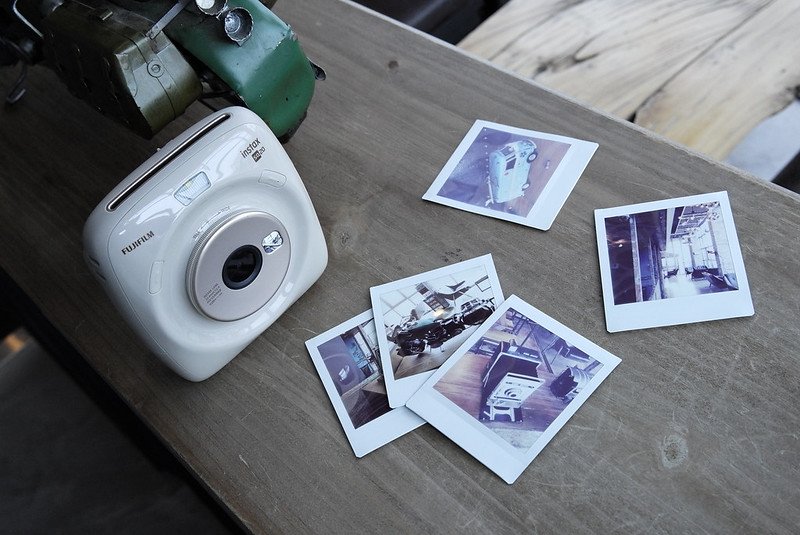
On the back of the camera is the main screen and an ipod-like set of buttons. This is where you will spend most of your time. There’s the default buttons like the ok and directional buttons but also a slew of other buttons that make this camera really hands-on.
There’s a dedicated print button, and also a button for vignettes and filters. More advanced photographers will appreciate the dedicated exposure compensation button to quickly change and make the image more or less bright.
By going deeper in the menus you can have access to the timer, flash and shooting modes.
The film prints on top of the camera at at the bottom there is no tripod mount like there is on the SQ10.
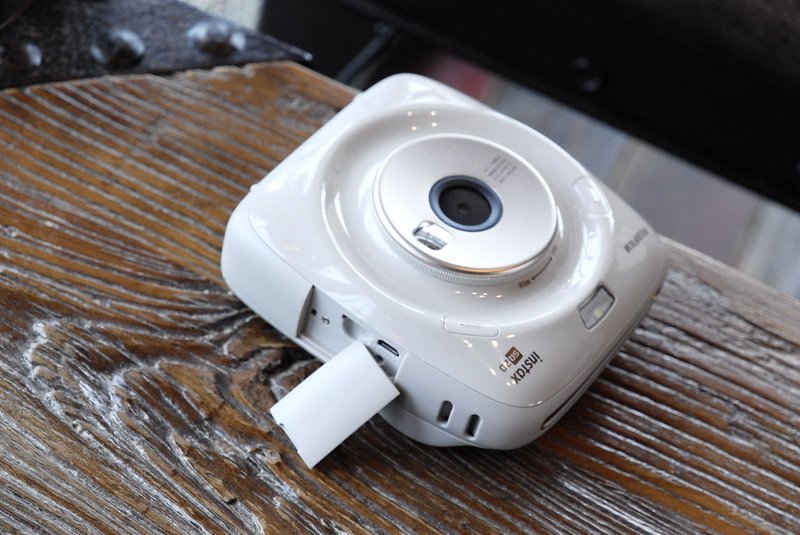
On the side, by lifting a flap you get access to an SD card slot and the mini USB port. You can charge this camera with a computer or directly on an outlet with an adapter. You can also bring a power bank instead so that you never run out of juice.
On the other side is the automatics vs manual print mode switch. If you leave it on automatic that means the cameras will print as soon as you push the shutter release button. if you put it on manual it will not print automatically.

To each their own but leave it on manual because you get to select which of your images are worthy to be printed after the fact vs being forced to waste a print for every shot, great or not.
On the very top of the camera’s back there is the lock to open the camera. This is where you load the film. Unlike most Instax cameras each film pack will last you a while because there is no automatic printing unless you want it.
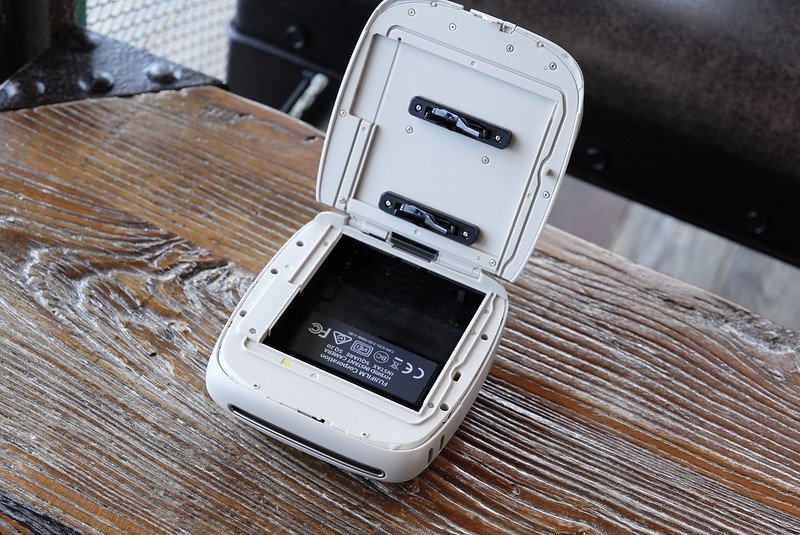
Filters and shooting mode
There’s 16 total filters in there with the usual suspects but the interesting ones would be the partial colors that put the whole picture in black and white and leave just one color.
Besides normal photography this can do bulb and double exposure. Bulb keeps the shutter open so you can take pictures of lightstreak and with double exposure you can shoot and melt two dirtrent images together for a creative effect that never fails to impress.
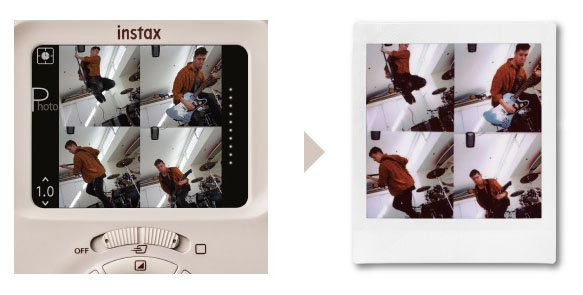
But what’s really different here is the ability to not only select a single frame from a short video recording (no sound) but also the ability to add 4 frames into one shot, or even 9 frames.
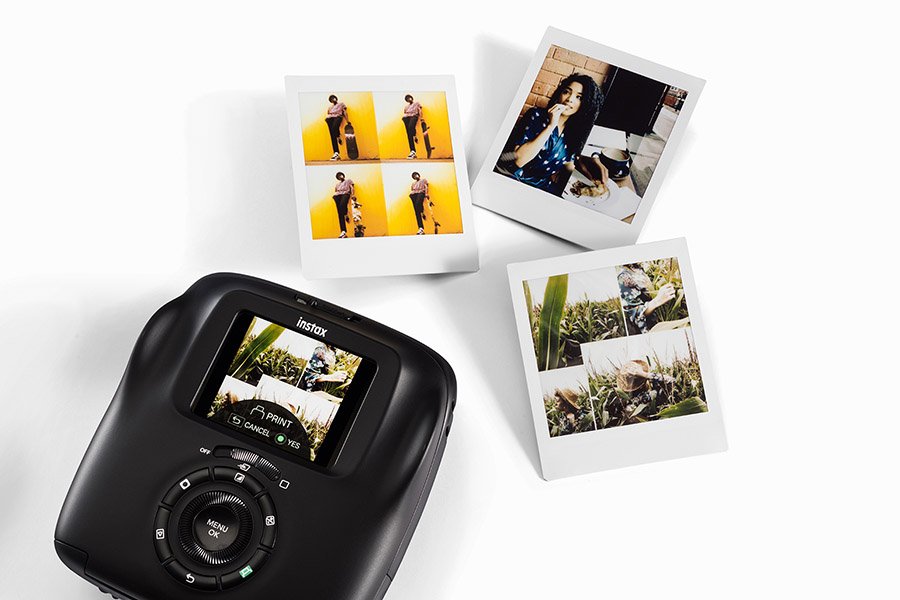
This is the only Instax camera capable of doing this, the newer Liplay doesn’t have that feature but is the closes camera to the SQ20 in spirit. Check out the Fujifilm Instax Liplay review for more.
Lens

The lens is a 28.5mm lens so it is a wide angle, similar to what most phones have. The aperture is a fast f2.4 which is pretty fast. With a fast lens you do not need to reach for the flash when the light starts dropping. So this is really great for low light.
Image Quality
Let’s look at the image quality for the last part of our Fujifilm Instax Square SQ20 review. At the core of the Fujifilm Instax SQ20 is its ability to shoot digital images. If you have shot analog Instax before this then you might be disappointed because the problem here is that Fuji opted for a below average digital sensor. So the images shot on the camera kind of look low resolution, so do not expect anything coming out of your phone.

The images can often be too dark or too bright but that is where the dedicated exposure value button comes in. You can always override the camera to make the picture brighter or darker.
But if you have not used an Instax before then you will most likely not pay attention to such things too much. However when you print, they can sometimes come out slightly dark and it is something you might want to correct when editing your images.
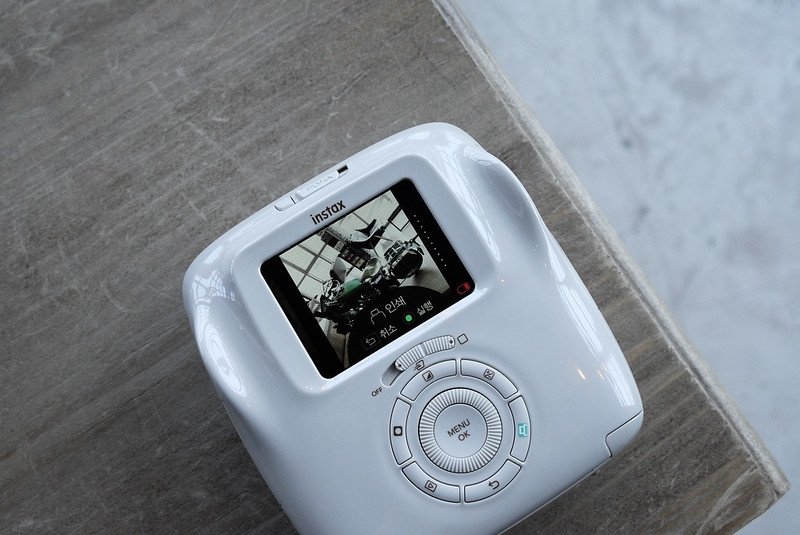
But when this nails the exposure, this can create excellent, stunning images. As always the bad workman blames his tools, if you pay attention and work this camera it can really impress.
Alternatives
This section will conclude our Fujifilm Instax Square SQ20 review. What are the other choices available?

Since most Instax cameras are analogue cameras the only alternative to this is the Fujifilm Liplay. This features a better digital sensor and the ability to link the camera to your phone via Bluetooth and use it as a printer. The downside however is that the Liplay outputs Instax mini and not Instax square, it also doesn’t have the collage and video features.
If you want the best analogue Instax square image then the Fujifilm Instax SQ6 is the best choice. It has advanced modes, and pure analogue film look.
Conclusion
I hope you enjoyed my Fujifilm Instax Square SQ20 review. It is one of the few Instax cameras that will save to a memory card. Even if it’s not the greatest in terms of digital image quality, if you work it you can get some stunning results and it is more than worth it. Get it here.
